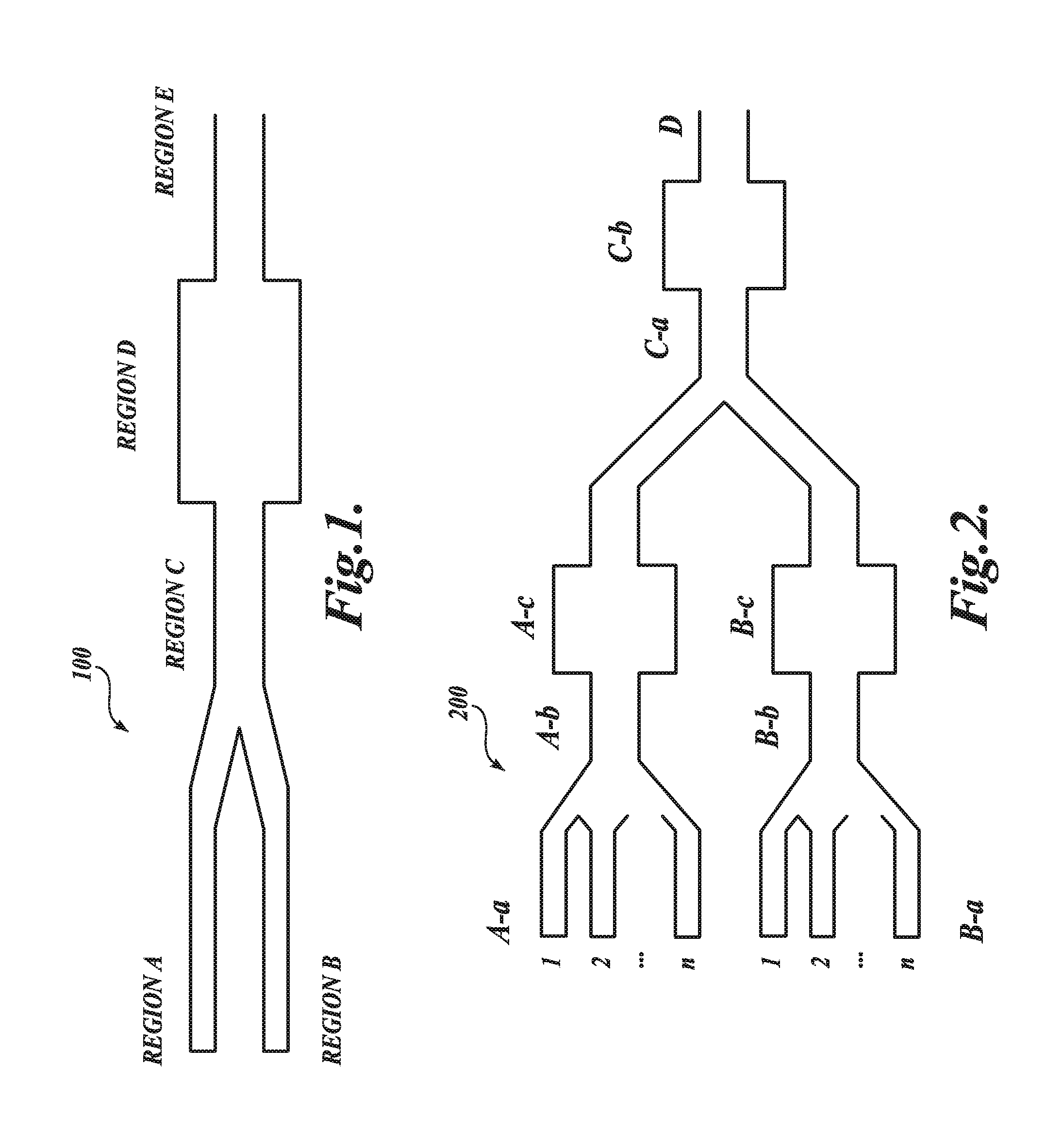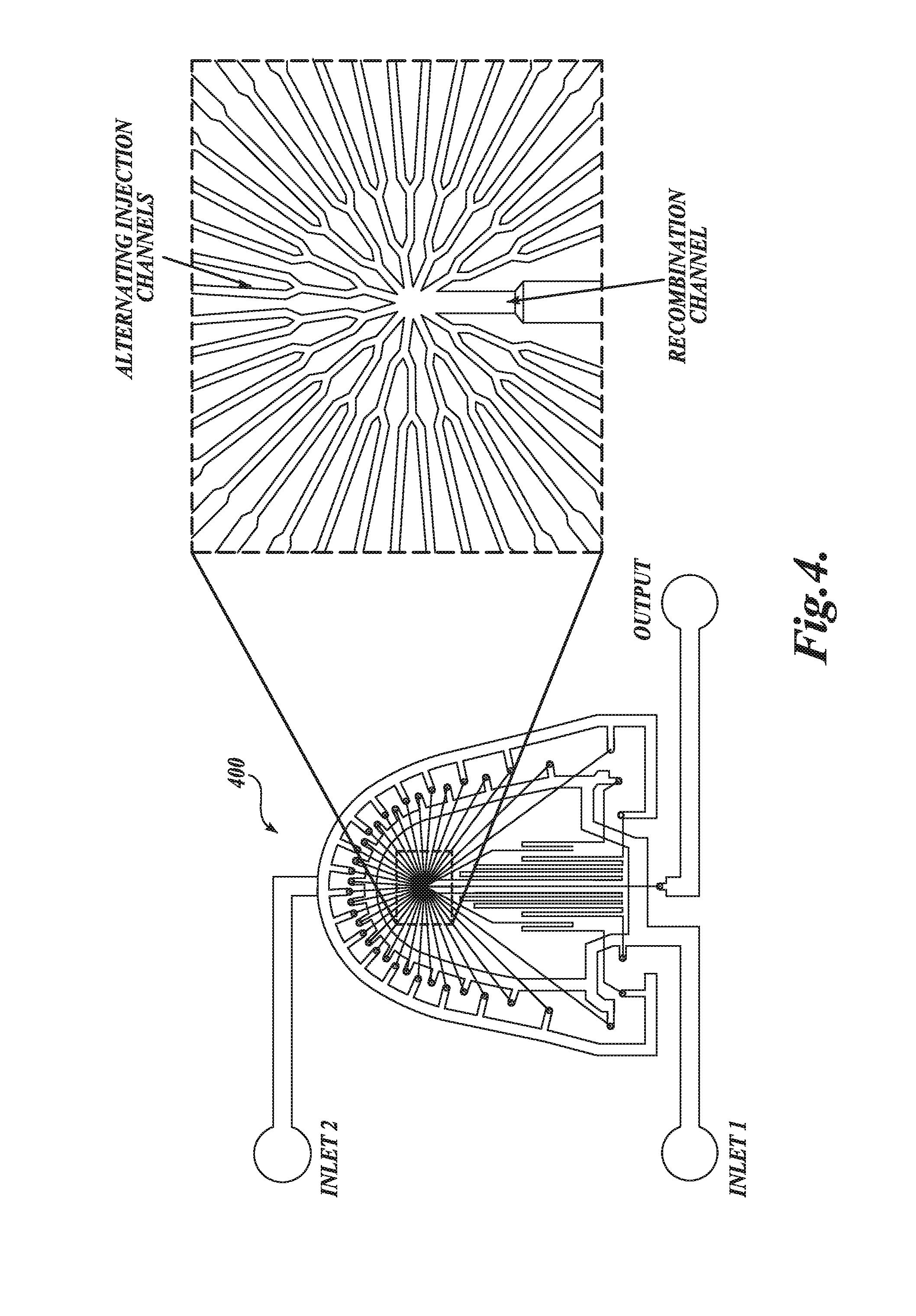Nucleic acid-containing lipid particles and related methods
a technology of lipid particles and nucleic acids, applied in the direction of microcapsules, artificial cell constructs, gene material ingredients, etc., can solve the problems of both variability and the characteristics of lnp produced
- Summary
- Abstract
- Description
- Claims
- Application Information
AI Technical Summary
Benefits of technology
Problems solved by technology
Method used
Image
Examples
example 1
Preparation of LNP Systems
Preformed Vesicle Method
[0240]In the example, the preparation of an LNP-siRNA system using the preformed vesicle method is described.
[0241]LNP-siRNA systems were made using the preformed vesicle method as depicted in FIG. 15A and as described in N. Maurer, K. F. Wong, H. Stark, L. Louie, D. McIntosh, T. Wong, P. Scherrer, S. Semple and P. R. Cullis, “Spontaneous Entrapment of Polynucleotides Upon Electrostatic Interaction With Ethanol Destabilized Cationic Liposomes: Formation of Small Multilamellar Liposomes,”Biophys. J., 80:2310-2326 (2001). Cationic lipid, DSPC, cholesterol and PEG-lipid were first solubilized in ethanol at the appropriate molar ratio. The lipid mixture was then added dropwise to an aqueous buffer (citrate or acetate buffer, pH 4) while vortexing to a final ethanol and lipid concentration of 30% (v / v). The hydrated lipids were then extruded five times through two stacked 80 nm pore-sized filters (Nuclepore) at room temperature using a Li...
example 2
Preparation of LNP Systems
Microfluidic Staggered Herringbone Mixer
[0242]In the example, a representative LNP-siRNA system of the invention using a microfluidic staggered herringbone mixer is described.
[0243]LNP-siRNA Preparation.
[0244]Oligonucleotide (siRNA) solution was prepared in 25 mM acetate buffer at pH 4.0. Depending on the desired oligonucleotide-to-lipid ratio and formulation concentration, solutions were prepared at a target concentration of 0.3 mg / ml to 1.9 mg / ml total lipid. A lipid solution containing DLin-KC2-DMA, DSPC, cholesterol, and a PEG-lipid at the appropriate molar ratio was prepared in ethanol and diluted with 25 mM acetate buffer to achieve an ethanol concentration of 90% (v / v). FIG. 15B is a schematic illustration of the microfluidic apparatus used in this example. The device has two inlets, one for each of the solutions prepared above, and one outlet. The microfluidic device was produced by soft lithography, the replica molding of microfabricated masters in...
example 3
LNP Systems
Solid Core
[0255]In the example, a structure of a representative LNP-siRNA system of the invention having a solid core is described.
[0256]Preparation of Lipid Nanoparticles.
[0257]LNP were prepared by mixing desired volumes of lipid stock solutions in ethanol with an aqueous phase employing the micro-mixer described above. For the encapsulation of siRNA, the desired amount of siRNA was mixed with 25 mM sodium acetate buffer at pH 4. Equal volumes of the lipid / ethanol phase and the siRNA / aqueous phase were combined in a micro-mixer containing a herring-bone structure to promote mixing. The ethanol content was quickly diluted to 25% with sodium acetate buffer upon leaving the micro-mixer. The flow rate through the micro-mixing was regulated using a dual-syringe pump (Kd Scientific). The lipid mixture then underwent a 4 hour dialysis in 50 mM MES / sodium citrate buffer (pH 6.7) followed by an overnight dialysis in phosphate buffered saline (pH 7.4).
[0258]Cryo-EM.
[0259]Samples w...
PUM
| Property | Measurement | Unit |
|---|---|---|
| Fraction | aaaaa | aaaaa |
| Fraction | aaaaa | aaaaa |
| Fraction | aaaaa | aaaaa |
Abstract
Description
Claims
Application Information
 Login to View More
Login to View More - R&D
- Intellectual Property
- Life Sciences
- Materials
- Tech Scout
- Unparalleled Data Quality
- Higher Quality Content
- 60% Fewer Hallucinations
Browse by: Latest US Patents, China's latest patents, Technical Efficacy Thesaurus, Application Domain, Technology Topic, Popular Technical Reports.
© 2025 PatSnap. All rights reserved.Legal|Privacy policy|Modern Slavery Act Transparency Statement|Sitemap|About US| Contact US: help@patsnap.com



